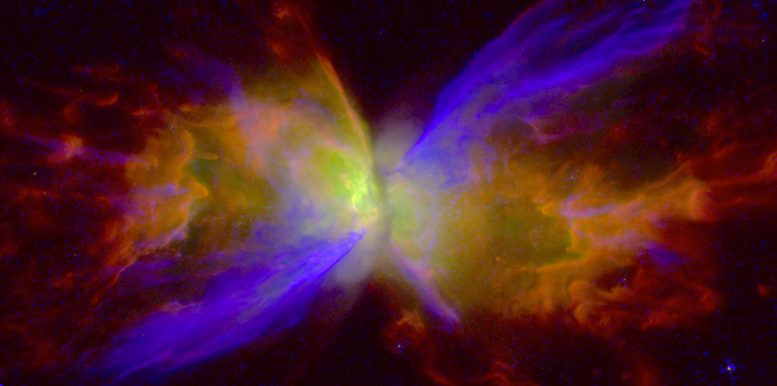
A color rendition of NGC 6302, the Butterfly Nebula, created from black-and-white exposures taken by the Hubble Space Telescope in 2019 and 2020. In the violet-colored regions, strong stellar winds are actively reshaping the nebular wings over the past 900 years. The other features range in age from 1200 to 2300 years. Credit: Bruce Balick/University of Washington/Joel Kastner/Paula Baez Moraga/Rochester Institute of Technology/Space Telescope Science Institute
Planetary nebulae are formed when red giant stars reach the end of their helium fuel supply and eject their outer layers, becoming hot and dense white dwarf stars about the size of Earth. The shed material, enriched with carbon, creates stunning patterns as it is slowly blown into the interstellar medium.
Most planetary nebulae have a circular shape, but some have an hourglass or wing-like appearance, such as the well-known “Butterfly Nebula.” These shapes are believed to result from the gravitational pull of a second star orbiting the parent star of the nebula, causing the material to expand into two lobes or “wings.” Like an expanding balloon, the wings grow over time without changing their original shape.
Yet new research shows that something is amiss in the Butterfly Nebula. When a team led by astronomers at the University of Washington compared two exposures of the Butterfly Nebula taken by the Hubble Space Telescope in 2009 and 2020, they saw dramatic changes in the material within the wings. As they will report on Jan. 12 at the 241st meeting of the American Astronomical Society in Seattle, powerful winds are driving complex alterations of material within the nebula’s wings. They want to understand how such activity is possible from what should be a “sputtering, largely moribund star with no remaining fuel.”
“The Butterfly Nebula is extreme for the mass, speed, and complexity of its ejections from its central star, whose temperature is more than 200 times hotter than the sun yet is just slightly larger than the Earth,” said team leader Bruce Balick, a UW professor emeritus of astronomy. “I’ve been comparing Hubble images for years and I’ve never seen anything quite like it.”
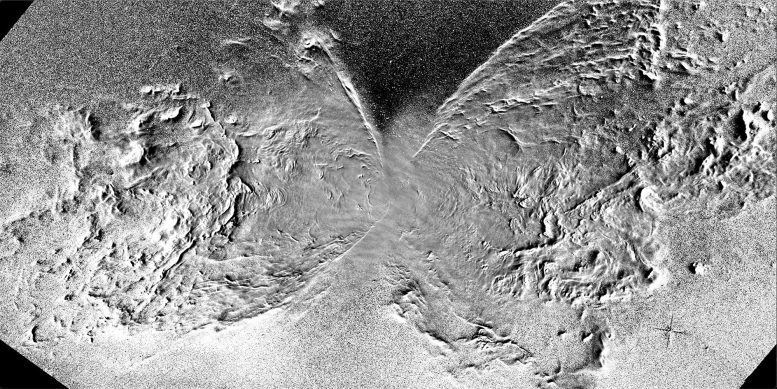
Structural changes within the Butterfly Nebula between 2009 and 2020. Various features have moved from the black regions into the white ones during the 11-year interval. The image reveals the surprisingly complex growth patterns caused by multiple ejections from the nebula’s unseen central star in the past two millennia. Credit: Lars Borchert and Bruce Balick/University of Washington
The team compared high-quality Hubble images taken 11 years apart to chart the speeds and growth patterns of features within the nebula’s wings. The bulk of the analysis was performed by Lars Borchert, a graduate student at Aarhus University in Denmark who participated in this study as a UW undergraduate student.
Borchert discovered roughly half a dozen “jets” — beginning about 2,300 years ago and ending 900 years ago — pushing material out in a series of asymmetrical outflows. Material in the outer portions of the nebula is moving rapidly, at about 500 miles per second, while material closer to the hidden central star is expanding much more slowly, at about a tenth of that speed. Paths of the jets cross one another, forming “messy” structures and growth patterns within the wings.
The nebula’s multi-polar and swiftly changing interior structure is not easy to explain using existing models of how planetary nebulae form and evolve, according to Balick. The star at the center of the nebula, which is hidden by dust and debris, could have merged with a companion star or drew off material from a nearby star, creating complex magnetic fields and generating the jets.
“At this point, these are all just hypotheses,” said Balick. “What this shows us is that we don’t fully understand the full range of shaping processes at work when planetary nebulae form. The next step is to image the nebular center using the James Webb Space Telescope, since infrared light from the star can penetrate through the dust.”
Stars like our sun will swell into a red giant and form planetary nebulae someday, expelling carbon and other relatively heavy elements into the interstellar medium to form star systems and planets in the far future. This new research, and other “time-lapse” analyses of planetary nebulae, can help illustrate not just how the materials for the star systems of tomorrow will take shape, but also how the building blocks of our own oasis were produced and gathered billions of years ago.
“It’s a creation story that is happening over and over again in our universe,” said Balick. “The shaping processes provide key insight into the history and impacts of the stellar activity.”
Reference: “The Tempestuous Life of the Butterfly Nebula, NGC 6302” by B. Balick, L. Borchert, J. Kastner and A. Frank, 12 January 2023, 241st meeting of the American Astronomical Society.
Abstract

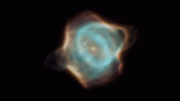
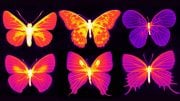
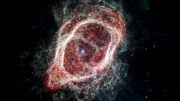
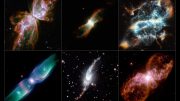

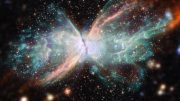
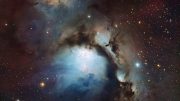
From the curving outline you can maybe get the impression that emitted matter is accelerating outwards, away from its source, which suggests it’s a “white hole,” but at present that’s a little too wild for me.
PS – my preference at the moment is to suppose there is a focused bidirectional flow of gravitational energy passing through this object, a so called “dark matter filament” effect.
We could be seeing the effect of extremely dense gravity bending space-time; the jet near the star are travelling the same speed as the outer, but due to the compression in time we see them as slower.
Looks like you’re basically suggesting that a visible bending of light (and thus of “space-time”) is evident in the provided images of the butterfly nebula.
PS I’m equating variably stretched light to “bent light.” The particular shape of bent or inverted spacetime with AdS qualities that fits the butterfly nebula best appears to be that of a “saddle” but that is a concept I’m not willing to adopt a complete conceptual ride-along upon.
For a couple of reasons I’m not the good acolyte of curved spacetime physics by any means. I see modern gravity physics as “optical metrology run wild” after it originated from a flat space special relativity theory universe.
Hints of an all-encompassing and spiritually-guiding faith-based physics may disappear when all bending of space and time is confined to manifolds that are invisible quite mundanely because they’re too tiny to see. The concept of “proof” is convincingly fit to observations of reality involving invisible agency in any case (or not). Constant lightspeed assumptions spanning significantly distinct gravitational realms based on lensing have a truly religious flavor in my view. There is no theory of quantum gravity that discards bent spacetime, doubt of bent spacetime is often enough equated to nazi tendencies, another cultlike indicator.
A gravity field can fairly conventionally be treated as an array of vectors each describing a quantized amount of vacuum pull; the vector field carriers describe the direction of pull and the individual carriers are naturally spread out with increasing distance radiated from their source.
A natural assumption is that a conventional matter source generates carriers that are all originally oriented so the pull effect is aimed inwardly, toward the source. In the case of a saddle-like field effect source, field vectors radiated either equatorially or alternatively closest to and over the spin poles, are conceivably inverted, as if the object radiates positive vacuum energy over half its surface that is centered over the spin equator or over the poles.
Equatorial regions of the stellar surface emitting reversed gravity (dark energy) could conceivably indirectly amplify the gravity binding within any matter emitted from polar regions of conventional positive gravity that happen to align with a filamentary dark matter effect.
A dark matter filament gravity flow effect may further conduct and focus a considerable amount of magnetic energy to bind polar emissions together to and from the outside.
The nebula resembles to me an aspect of massless paired quantum vacuum energy dipoles (bi-vector field carriers) where the pair has collapsed with complementary polar/equatorial tensor-like effects. At this massive scale and presumably with net positive mass it’s more comfortable to imagine it as a differential gravity image based on a zero-gravity field baseline instead of a negative energy baseline.
It’s accordingly resembling a collision between dark-matter-like filamentary retro-reflected opposing gravity flows (which both have rolled into a sideways-pull-forward-push phase) on a massive scale between two massive objects spinning together on a common axis that happens to have a disintegrating star caught in their retro-reflected gravity sights.